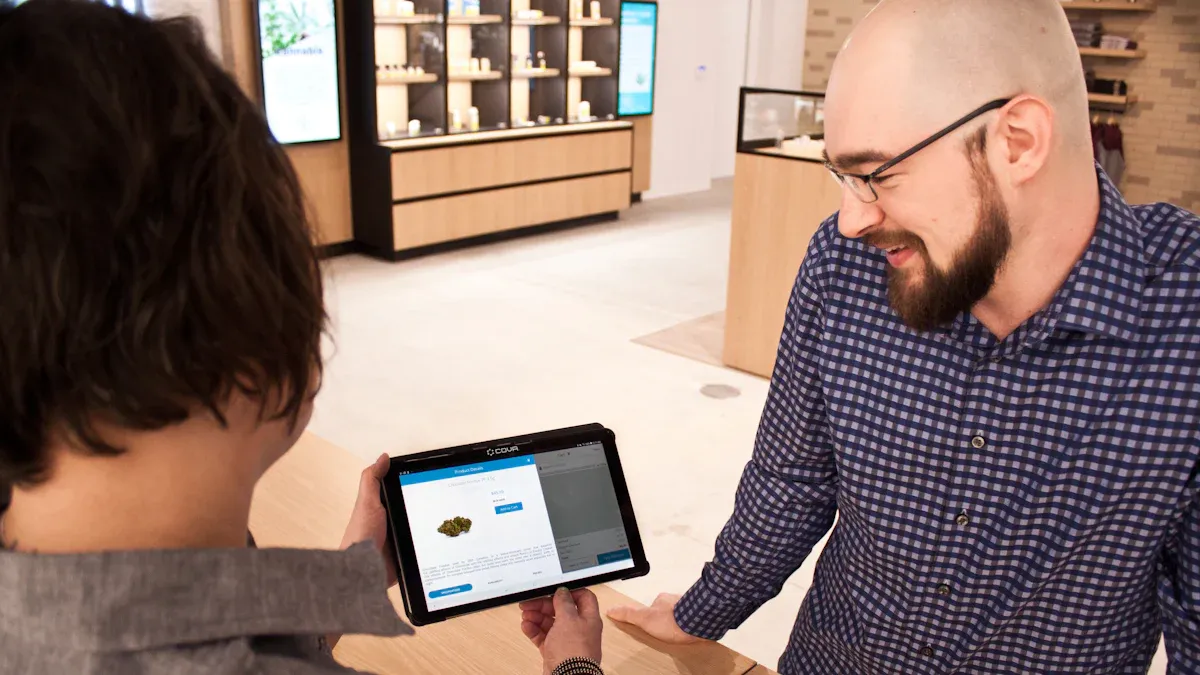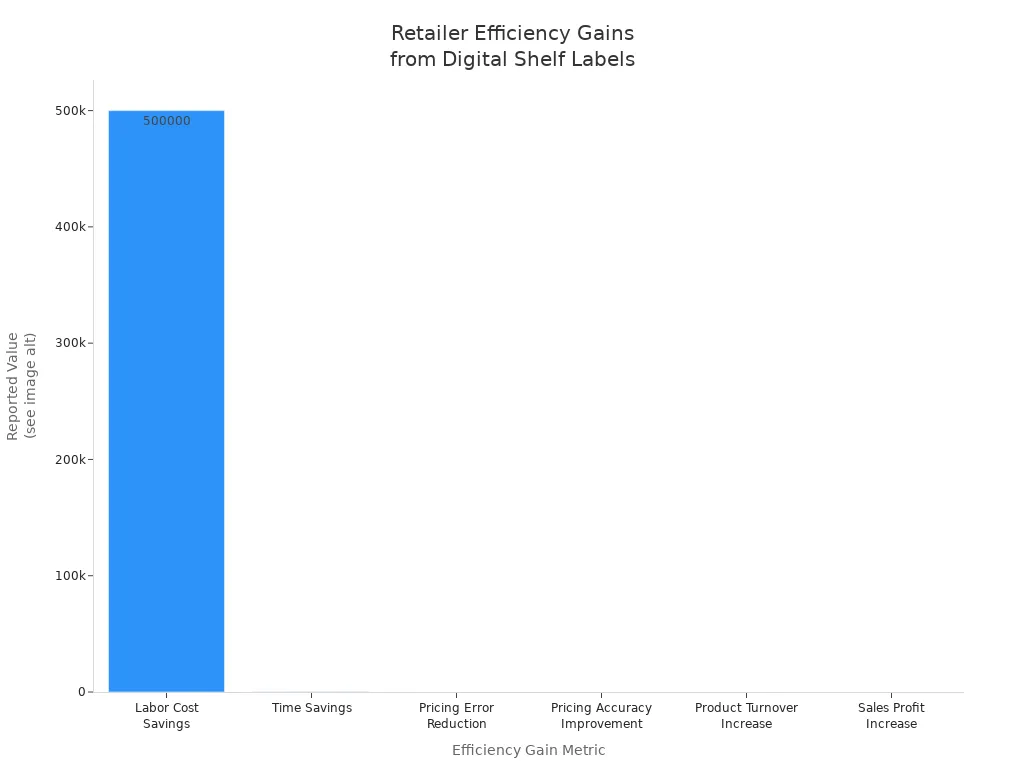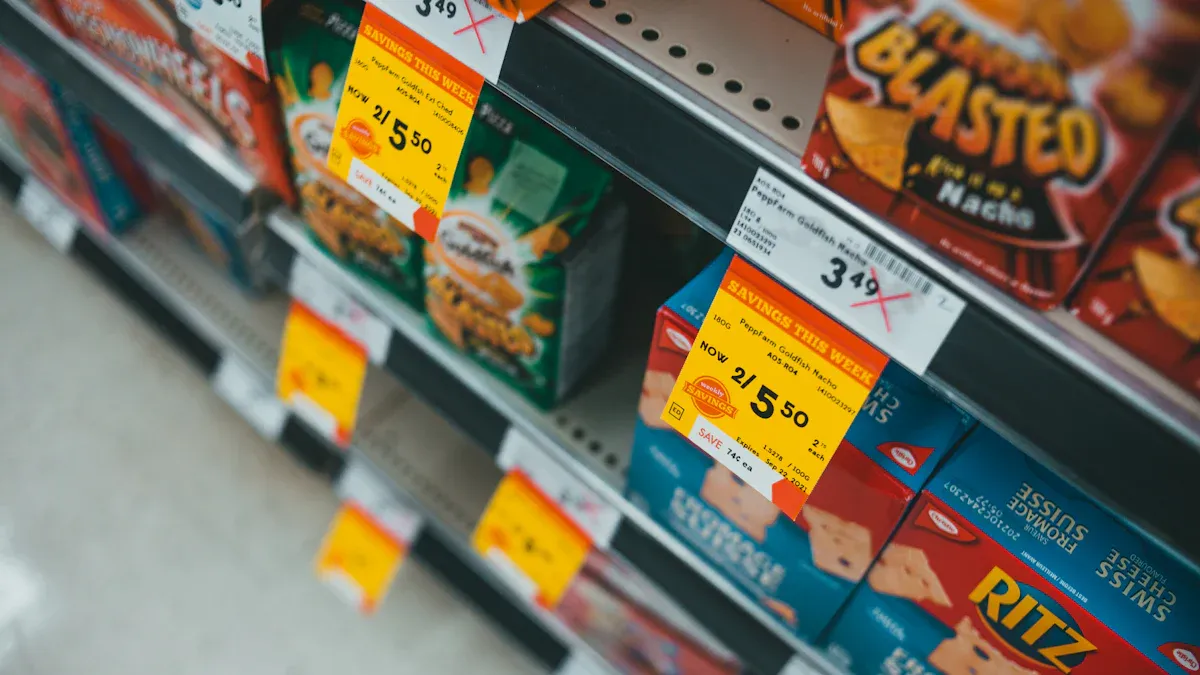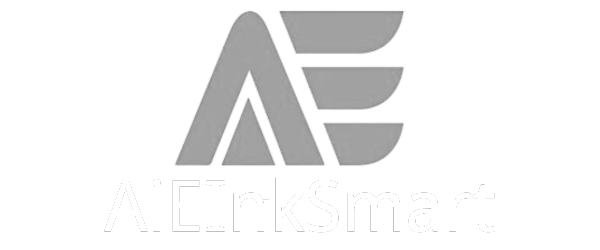
You can transform your store’s efficiency and profitability with digital shelf pricing. Electronic shelf labels automate price updates and eliminate manual errors, saving up to 50 labor hours weekly and reducing costs by $54,000 annually for a mid-sized retailer. Digital price tags ensure accurate pricing and enhance customer trust. With ESL Gateway AP and ESL Price Tag solutions, Esl Retail enables streamlined operations and dynamic pricing. Electronic shelf labels also support real-time price changes and display rich product information, helping you stay competitive in a fast-paced retail environment.
Digital Shelf Pricing: Immediate Impact on Store Operations
Efficiency Gains with Digital Shelf Labels
Streamlined Price Management
You can achieve remarkable efficiency gains by adopting digital shelf labels in your store. These labels automate price updates, allowing you to manage thousands of products from a central system. Instead of spending hours printing, cutting, and replacing paper tags, you can update prices across your entire store with just a few clicks. This automation frees your staff to focus on customer service and inventory management, rather than repetitive manual tasks.
Tip: Digital shelf labels help you maintain product information integrity, ensuring that every item displays the correct details at all times.
The following table highlights the measurable efficiency gains retailers have reported after implementing digital shelf labels:
| Efficiency Gain Metric | Reported Value / Impact | Supporting Details / Examples |
|---|---|---|
| Labor Cost Savings | Up to $500,000 annually for large retail chains | Automation reduces manual price updates, saving over 4,000 hours annually in large stores |
| Time Savings | Approximately 3 hours per week per store | Manual price changes minimized, freeing staff time |
| Pricing Error Reduction | 25-30% reduction | Pricing errors costing up to $2 million annually are significantly lowered |
| Pricing Accuracy Improvement | 25-30% increase | Leads to higher customer satisfaction and loyalty |
| Product Turnover Increase | 15% increase | Due to dynamic pricing enabled by ESLs |
| Sales Profit Increase | Up to $50 more profit per item in high-demand categories | Enabled by real-time price adjustments and dynamic pricing |
| Operational Efficiency | Enhanced decision-making and inventory management | Case studies from Walmart and other retailers |
| Environmental Impact | Reduced paper waste | ESLs replace traditional paper labels, supporting sustainability goals |

Retailers like Lee’s Discount Liquor and Conad Superstore have reported that digital shelf labels enable faster price updates and improve decision-making. POCO store in Germany used electronic shelf labels to overhaul its pricing strategy, freeing staff for higher-value tasks.
Faster Storewide Price Changes
Digital shelf labels transform the speed at which you can implement price changes. Traditional price tags require manual updates, which can take about 30 seconds per tag. For a store with thousands of products, this process consumes significant labor hours and increases the risk of errors.
| Aspect | Traditional Price Tags | Digital Shelf Labels (ESLs) |
|---|---|---|
| Update Method | Manual printing, cutting, and replacing tags | Instant wireless updates via central system |
| Time Required per Price Change | Approximately 30 seconds per tag | Seconds for thousands of tags with one click |
| Labor Intensity | High; requires significant staff time | Low; frees employees for other tasks |
| Error Rate | Prone to human errors and mismatches | Error-free, real-time price accuracy |
| Operational Impact | Time-consuming, costly, and inefficient | Saves labor hours, reduces operational costs |
| Support for Dynamic Pricing | Very limited; slow to implement promotions | Enables real-time promotions and dynamic pricing |
With electronic shelf labels, you can update thousands of prices in seconds. This capability supports dynamic pricing strategies and time-sensitive promotions, giving you a competitive edge in fast-moving retail environments.
Cost Savings from Electronic Shelf Labels
Reduced Labor Costs
Electronic shelf labels deliver substantial cost savings by automating the price update process. You no longer need to allocate staff hours to print, sort, and replace paper tags. Retailers have reported up to 80% savings in labor costs related to price updates. This reduction in manual labor not only lowers payroll expenses but also allows your employees to focus on customer engagement and store presentation.
- ESLs automate price updates, reducing labor costs by up to 80%.
- Staff spend 80% less time on price updates, focusing on higher-value activities.
- Large retailers can reduce full-store repricing from two weeks to just five minutes.
Lower Material and Printing Expenses
Switching to electronic shelf labels eliminates recurring expenses for paper, ink, and printer maintenance. You no longer need to purchase or ship physical labels, which reduces both material costs and environmental impact. ESLs use energy-efficient e-ink technology, which minimizes power consumption and maintenance needs. Their long lifespan—up to 10 years—means you benefit from sustained cost savings over time.
A study of an international grocery retailer found that ESL installation increased gross margins by reducing both variable and fixed menu costs. These savings come from fewer material purchases and less frequent equipment maintenance.
Note: By adopting electronic shelf labels, you support your store’s sustainability goals while achieving operational cost savings.
Enhanced Pricing Accuracy with Digital Price Tags
Elimination of Manual Errors
Digital price tags automate the entire pricing update process, removing the risk of human error. Manual price tag changes are repetitive and error-prone, especially during busy periods or large promotions. With digital shelf pricing, you ensure that every price update is accurate and consistent across your store.
- Digital price tags automate price changes, eliminating manual steps such as printing and replacing paper tags.
- Automation removes common errors like mislabeling items or attaching the wrong price tags.
- Real-time updates through POS integration ensure all digital tags display the correct price simultaneously.
Retailers have reported up to a 60% reduction in pricing errors and a 58% decrease in human errors after adopting digital shelf labels. Major retailers like Carrefour and Tesco have experienced 50% fewer pricing errors, leading to fewer customer disputes and increased trust.
Consistent Shelf and Checkout Pricing
You can guarantee that the price displayed on the shelf matches the price at checkout. Digital shelf labels synchronize instantly with your POS and inventory systems, ensuring real-time price alignment across all channels. This consistency reduces customer confusion, prevents disputes, and builds shopper confidence.
| Evidence Aspect | Supporting Details |
|---|---|
| Real-time Synchronization | Prices update instantly across all sales channels, ensuring shelf and checkout prices always match, preventing discrepancies. |
| Pricing Error Reduction | Retailers report up to 60% reduction in pricing errors and a 58% decrease in human errors due to automation. |
| Case Studies | Major retailers like Carrefour and Tesco have experienced 50% fewer pricing errors after adopting digital price tags. |
| Automation Benefits | Automated price updates eliminate manual input errors such as mislabeling, wrong price tags, and incorrect price entries. |
| Omnichannel Pricing Alignment | Integration with POS and inventory systems ensures consistent pricing across physical and online channels, supporting omnichannel strategies. |
| Audit and Transparency | Automated logging of every price change enables quick detection and correction of pricing mistakes, reducing customer disputes. |
| Customer Trust | Consistent pricing reduces disputes and increases shopper confidence and loyalty. |
Digital shelf pricing not only improves pricing accuracy but also enhances your store’s reputation for transparency and reliability. This approach supports streamlined operations and helps you deliver a seamless shopping experience.
What Is Digital Shelf Pricing and How Does It Work?
Core Components of Digital Shelf Labels
E-Paper Technology and Display Features
You will find that digital shelf labels rely on advanced display technology to deliver clear and accurate product information. Most systems use e-paper displays, which mimic the look of traditional paper but offer digital flexibility. E-paper technology consumes very little power, so the labels can operate for years on a single battery. This efficiency reduces maintenance costs and supports sustainability goals. E-paper displays also provide excellent readability, even under bright store lighting, making it easy for your customers to see prices and promotions.
E-paper digital shelf labels allow you to update product details instantly. You can display not only prices but also promotions, stock levels, and QR codes for more information. The thin and flexible design of e-paper screens fits various label sizes, so you can use them across different product categories. This technology supports automatic price updates, which helps you maintain pricing accuracy and reduce manual labor.
Tip: E-paper labels help you cut down on paper waste and energy use, making your store more eco-friendly.
Centralized Control Systems
You manage digital shelf labels through a centralized software platform. This system connects to each label wirelessly, using technologies like RF, Bluetooth, or Wi-Fi. The platform lets you control thousands of labels from one interface. You can schedule price changes, launch promotions, and monitor label status in real time. The user-friendly dashboard makes it easy for your staff to learn and operate the system.
The centralized control system also integrates with your store’s inventory and point-of-sale (POS) platforms. This integration ensures that every price change or product update appears instantly on the shelf. You gain the ability to coordinate pricing across all channels, supporting both in-store and online strategies.
| Component | Functionality |
|---|---|
| E-Paper Display | Shows prices, promotions, and product info with high readability |
| Power Source | Long-lasting batteries or energy-harvesting options for years of operation |
| Communication Module | Wireless connection for real-time updates |
| Mounting System | Secure attachment to shelves in various retail environments |
| Centralized Software | Remote management, bulk updates, and integration with retail systems |
Real-Time Price Updates in Action
Integration with POS and Inventory Systems
You can connect digital shelf labels directly to your POS and inventory management systems. This integration allows you to synchronize pricing, stock levels, and promotions across your entire store. When you update a price in your POS, the change appears instantly on the shelf. This process eliminates manual re-labeling and ensures that shelf prices always match checkout prices.
With this setup, you can also display real-time stock information. Customers see accurate availability, which helps them make better purchasing decisions. The integration supports dynamic pricing strategies, so you can adjust prices based on demand, time, or competitor activity.
Automated Data Synchronization
Digital shelf pricing systems use automated data synchronization to keep information up to date. The system continuously extracts and processes data from your retail platforms. It cleans and standardizes this data, then sends updates to each label wirelessly. If there is a pricing anomaly or stock change, the system triggers an alert and updates the shelf label immediately.
This workflow ensures that your store always displays the correct price and product information. You can respond quickly to market changes, run time-sensitive promotions, and maintain high pricing accuracy. Real-time price updates improve your operational efficiency and enhance the customer experience.
Note: Automated data synchronization reduces human error and supports scalable, reliable store operations.
Real-Time Price Updates: Operational Advantages

Dynamic Pricing Strategies
Adjusting Prices Based on Demand
You can use dynamic pricing to respond instantly to changes in demand, inventory, and competitor activity. Real-time price updates let you monitor key value items and competitor prices, so you can adjust your pricing to stay competitive and drive store traffic. Retailers like Kroger and Amazon use AI-powered systems to analyze sales, inventory, and market trends, enabling them to optimize stock turnover and maximize revenue. When you align prices with current demand, you avoid lost sales from outdated pricing and reduce the risk of overstock or dead stock.
- Real-time pricing models help you optimize sales and reduce waste by adjusting prices based on inventory and demand.
- Predictive pricing lets you forecast demand and set optimal prices ahead of events, improving profitability and customer satisfaction.
- You can identify pricing gaps with competitors and react quickly to protect your margins.
| Key Strategy/Benefit | Description |
|---|---|
| Optimizes Margin Goals | AI balances sales, competitiveness, and profitability automatically. |
| Competitor Pricing Monitoring | Continuous data collection helps you lead or match competitors. |
| Supply Chain Disruption Response | AI adjusts prices to absorb cost increases and forecast supply impacts. |
| Continuous Optimization | Ongoing monitoring and adjustment improve revenue and sell-through rates. |
Time-Sensitive Promotions
Dynamic pricing also empowers you to launch and manage time-sensitive promotions with ease. You can schedule price changes for flash sales, holiday events, or clearance campaigns, ensuring that every shelf label updates instantly. This flexibility allows you to react to market trends, competitor actions, or unexpected supply chain disruptions. Real-time analytics provide instant feedback on promotional performance, so you can adjust your strategy to maximize results.
- You gain enhanced responsiveness to market changes, such as tariff increases or competitor price shifts.
- Real-time data fosters data-driven decision-making, reducing discrepancies and conflicts across your organization.
- You can track promotional performance instantly and refine your approach for better outcomes.
Compliance and Regulation
Meeting Legal Pricing Requirements
You must ensure that your pricing systems comply with regional regulations and industry standards. Digital shelf pricing solutions support compliance by automating updates and maintaining consistency with your POS systems. In North America, you need to focus on data security and privacy. In Europe, regulations emphasize sustainability, energy efficiency, and consumer safety. Asia-Pacific regions require adherence to local standards and government initiatives for digital transformation.
| Region | Key Compliance and Regulatory Requirements |
|---|---|
| North America | Data security, privacy, and cybersecurity protocols |
| Europe | Sustainability, energy efficiency, product transparency, consumer safety |
| Asia-Pacific | Local standards, automation, and contactless solutions |
| Liquor Retail | Legal mentions, multilingual labeling, consistency with POS, NFC/QR codes |
Centralized control and cloud-based management help you automate compliance processes, eliminate human error, and ensure consistent information across all channels.
Transparent Price Communication
You build customer trust by ensuring transparent and accurate price communication. Digital shelf labels synchronize prices instantly across all store systems, so customers always pay the price displayed on the shelf. This reduces pricing errors by about 30% and decreases manual mistakes. Walmart’s adoption of digital shelf labels led to a 25% drop in product return rates, showing improved customer satisfaction.
- Digital shelf labels display additional product information, such as specifications, allergy warnings, and promotions, enhancing transparency.
- Some systems support multiple languages, making information accessible to more shoppers.
- Interactive features like QR codes and NFC allow customers to scan for reviews, compare items, and access promotions.
- Centralized control ensures real-time accuracy across shelves, checkout, and online stores.
Note: Wireless linking and e-ink screens allow you to update prices, QR codes, and product images within seconds, ensuring consistent and correct information for every customer.
Digital Shelf Labels and Inventory Management

Improved Stock Visibility
Automated Stock Alerts
You gain a significant advantage in inventory management when you use digital shelf labels. These labels provide real-time inventory updates, ensuring your data remains current and accurate. Automated stock alerts notify you instantly when items approach low stock or reach expiration. This system eliminates the need for manual stock checks, which often lead to errors and missed restocks. Visual alerts on the shelf help your staff quickly identify products that need attention, reducing the risk of out-of-stock situations.
- Real-time shelf-level data improves inventory accuracy and reduces phantom inventory.
- Automated reconciliation eliminates manual errors and supports proactive stock management.
- Enhanced visibility into inventory levels enables smarter decisions and faster response to supply chain changes.
Digital shelf labels also streamline communication about stock status, substitutions, and product changes. You can act quickly to resolve issues, keeping your shelves full and your customers satisfied.
Faster Replenishment Cycles
You can accelerate your replenishment cycles with digital shelf labels. These labels integrate with your inventory management system, allowing instant digital orders when reorder points are reached. LED alerts and geolocation features guide your staff directly to shelves that need restocking, saving time and reducing labor costs. Instant updates on the shelf reduce out-of-stock events and improve on-shelf availability.
- LED-guided navigation supports efficient picking and order fulfillment.
- Real-time inventory accuracy helps you identify low stock and upcoming deliveries.
- Integration with automated ordering systems ensures accurate replenishment and improved customer experience.
This technology optimizes your warehouse workflows and accelerates order fulfillment, leading to reduced operational costs and faster inventory turnover.
Data-Driven Store Operations
Sales Analytics and Reporting
Digital shelf labels enhance your ability to analyze sales and generate reports. They connect with your central management software, which links to ERP, POS, and inventory systems. This integration allows you to synchronize updates across all locations, ensuring accurate and consistent pricing data. You can track customer interaction patterns and personalize promotions based on demand forecasting.
- Real-time price adjustments and dynamic pricing become possible.
- Integration with IoT devices, such as shelf sensors and RFID tags, allows automatic inventory monitoring and label updates.
- Cloud connectivity centralizes data management, making reporting faster and more comprehensive.
You benefit from richer, more accurate, and timely data, which supports better pricing strategies, inventory management, and customer engagement.
Optimized Product Placement
You can use insights from digital shelf labels to optimize product placement throughout your store. Data-driven analytics help you monitor product performance, identify issues like poor search visibility, and adjust your merchandising strategies. Enhanced visibility enables you to collaborate more effectively with suppliers and third-party platforms. Continuous monitoring allows you to resolve issues proactively, automate processes, and refine your supply chain strategies.
A 30% improvement in stock conditions has been observed with the use of electronic shelf labels. This improvement contributes to optimized labor management, planogram compliance, and better alignment of promotions. You create a more efficient and responsive store environment, which leads to higher sales and improved customer satisfaction.
Enhancing Customer Experience with Digital Price Tags
Transparent and Accurate Pricing
Building Customer Trust
You build trust with your customers when you provide transparent and accurate pricing. Digital price tags display real-time prices, ensuring that the amount shown on the shelf always matches the price at checkout. This transparency helps you comply with regulations and reduces the risk of customer complaints. Automated price updates eliminate errors caused by manual changes, so your customers can shop with confidence. When shoppers see consistent pricing throughout your store, they feel assured that they are getting fair deals.
Reducing Checkout Disputes
You can significantly reduce checkout disputes by using electronic shelf labels. These labels synchronize prices across all store locations and checkout systems, preventing mismatches. Customers see the same price on the shelf and at the register, which streamlines the checkout process and minimizes frustration. Electronic shelf labels also reflect promotions and discounts instantly, so shoppers never miss out on deals. Automated updates remove the risk of outdated or incorrect pricing, making your operations more efficient.
- Digital price tags enable instant and real-time price updates, ensuring pricing accuracy.
- They eliminate human errors caused by manual price tag changes.
- ESLs synchronize prices across all store locations and with checkout systems, preventing mismatches.
- This synchronization reduces customer frustration and disputes at checkout.
- ESLs increase transparency by instantly reflecting promotions and discounts.
- Retailers experience fewer pricing disputes as customers trust the displayed prices.
- Automated updates remove the risk of outdated or incorrect pricing, streamlining operations.
Personalized Offers via Electronic Shelf Labels
Targeted Promotions
You can deliver targeted promotions directly to your customers using electronic shelf labels. These labels allow you to display personalized discounts and exclusive deals in real time. By integrating loyalty programs, you create a tailored shopping experience that increases engagement. Customers can access additional product information, reviews, or demos by scanning QR codes on the labels. This approach not only improves convenience but also creates a better shopping experience for everyone.
- Personalized discounts appear instantly for loyalty members.
- Real-time updates allow you to launch exclusive deals and point balance reminders.
- Dynamic promotional alerts and loyalty messaging enhance customer engagement.
- QR codes provide access to more product details, reviews, or demonstrations.
Loyalty Program Integration
You enhance customer engagement by integrating electronic shelf labels with your loyalty programs. These labels let you customize displays to highlight loyalty offers, personalized recommendations, and discounts based on browsing habits. Customers can scan labels to unlock exclusive rewards or access detailed product information. This seamless connection between physical shelf labels and digital loyalty programs encourages repeat visits and strengthens loyalty. Real-time integration ensures that offers remain relevant and immediate, transforming shopping from a simple transaction into a more engaging experience.
- ESLs allow you to highlight loyalty program offers and personalized recommendations.
- Customers scan labels to access exclusive rewards and detailed product information.
- Real-time integration deepens engagement and encourages repeat visits.
- This connection between shelf labels and loyalty programs strengthens customer loyalty.
Tip: Use electronic price tags to create a seamless link between your loyalty program and in-store promotions, driving enhanced customer engagement and repeat business.
Implementing Digital Shelf Pricing: Key Considerations
System Integration and Compatibility
Connecting with POS and ERP Platforms
You need to ensure seamless integration between your digital shelf labels and existing systems. Start by assessing your current technology stack, including hardware, software, and network infrastructure. This step helps you understand the requirements for electronic shelf label (ESL) deployment. Collaborate with your ESL vendor early to address compatibility issues and avoid costly modifications. Modern ESL platforms offer robust APIs and middleware, making it easier to connect with most major POS and ERP systems. You should also prioritize data consistency across all customer touchpoints, including online channels.
Retailers often worry about integrating ESLs with legacy POS or ERP systems. However, most vendors provide strong support and integration tools to streamline the process.
A major challenge involves ensuring that your ESL solution works smoothly with your POS and inventory management software. If you overlook this, you risk data discrepancies and operational inefficiencies. Choose flexible ESL systems that adapt to various technologies and legacy configurations. Pilot testing helps you identify and resolve integration issues before a full rollout. Ongoing vendor support and regular updates keep your system compatible as your business evolves.
Ensuring Data Security
You must protect sensitive pricing and inventory data when implementing digital shelf pricing. Secure all data transfers between ESLs, POS, and back-end systems using encryption and access controls. Regularly update your software to address vulnerabilities. Work with vendors who follow industry best practices for cybersecurity. This approach safeguards your store against data breaches and ensures compliance with privacy regulations.
Staff Training and Change Management
Onboarding and Support
Effective staff training is essential for a successful transition to digital shelf pricing. Provide comprehensive, hands-on training sessions that cover the use of digital shelf labels, automation rule management, and system alert responses. Encourage your team to ask questions and share feedback. This approach builds confidence and engagement, helping staff adapt quickly to new workflows.
- Offer practical demonstrations and real-world scenarios.
- Create a supportive environment for ongoing learning.
- Highlight how automation reduces manual tasks and frees up time for customer service.
Ongoing Maintenance Needs
You should plan for ongoing maintenance to keep your digital shelf pricing system running smoothly. Schedule regular software updates and system checks. Assign team members to monitor label performance and respond to alerts. Maintain open communication with your vendor for technical support and troubleshooting. Proactive maintenance minimizes downtime and ensures long-term reliability.
Investment and ROI for Digital Shelf Labels
Cost-Benefit Analysis
Investing in digital shelf labels involves upfront costs for hardware, software, installation, and training. Prices range from $5 to over $20 per label, depending on size and features. Smaller labels with basic information cost less, while larger, feature-rich labels require a higher investment. Bulk orders can reduce per-unit costs. The table below outlines typical investment ranges:
| Store Size / Implementation Type | Investment Cost Range (USD) | Number of Labels (Approx.) | Notes |
|---|---|---|---|
| Small Store (Budget) | $3,000 – $6,000 | ~590 | Self-installation, basic features |
| Small Store (Full Service) | $7,000 – $13,000 | ~590 | Advanced features, better support |
| Medium Store | Scales up | ~5,000 | Costs increase with size |
| Large Store | Scales up further | ~25,000 | Higher total investment |
Digital shelf pricing systems typically pay for themselves within 18 months and deliver a five-year ROI of about 277%. Labor savings, reduced errors, and dynamic pricing drive these returns. Pricing optimization software further enhances your ability to maximize profits and streamline operations.
Payback Period Expectations
You can expect to recoup your investment in digital shelf pricing within 12 to 24 months. Factors such as store size, frequency of price changes, and labor cost savings influence this period. Larger retailers and those with frequent price adjustments often see faster returns. Track key performance indicators like labor efficiency and pricing accuracy to measure your ROI. Operational efficiencies and cost savings contribute to a rapid payback, making digital shelf pricing a smart long-term investment.
Addressing Concerns about Digital Shelf Pricing
Dynamic Pricing and Customer Perception
Balancing Flexibility and Fairness
When you introduce digital shelf pricing, you may encounter concerns about dynamic pricing. Many customers worry about price fairness. They fear that prices could rise unexpectedly during their shopping trip, which can create confusion and distrust. Some shoppers associate dynamic pricing with surge pricing models, such as those used by ride-sharing apps, and often see these as unfair—especially when prices increase during busy times.
- Customers often feel uneasy if shelf prices do not match checkout prices.
- Many people accept price drops but strongly object to price increases while they shop.
- Surveys show that most consumers view dynamic pricing as unfair in grocery and big-box stores.
- Shoppers worry that small daily price changes might lead to paying more depending on when they visit.
You can address these concerns by setting clear pricing policies and avoiding sudden, unexplained price hikes. Many retailers, including large chains, publicly commit to stable pricing and deny plans for real-time price fluctuations. By focusing on transparency and consistency, you help build trust and reduce skepticism.
Communicating Price Changes
Clear communication plays a key role in customer acceptance of digital shelf pricing. If you do not explain how and why prices change, shoppers may lose trust in your brand. Customers want to know that pricing remains fair and transparent. You should use signage, digital displays, or staff training to inform shoppers about your pricing approach. When you highlight the benefits—such as accurate pricing, labor savings, and sustainability—customers are more likely to support the transition.
Tip: Always ensure that the price displayed on the shelf matches the price at checkout. This practice helps prevent disputes and builds customer confidence.
Technical Reliability of Electronic Shelf Labels
Managing System Downtime
You rely on electronic shelf labels to keep your store running smoothly. However, technical glitches, power outages, or communication errors can cause downtime. These interruptions may lead to lost sales, lower customer satisfaction, and higher operational costs. To reduce these risks, you should use systems with proactive fault detection and real-time fault alarms. Automated monitoring helps you resolve issues quickly and maintain pricing accuracy.
Modern solutions use cloud-based platforms for secure, rapid updates. For example, some systems update shelf labels in under 60 seconds and support real-time synchronization across multiple locations. This technology helps you maintain high uptime and operational efficiency.
Vendor Support and Service Levels
Choosing the right vendor ensures that your electronic shelf labels remain reliable. Look for features such as Bluetooth 5.0 for stable wireless communication, long battery life, and durable designs that withstand dust, water, and temperature changes. Cloud-based management allows you to update prices remotely and monitor system health from anywhere.
- Vendors should offer expert guidance and tailored solutions.
- Fast response times, such as support within one business day, help you resolve issues quickly.
- Flexible deployment options, including gateway and standalone modes, support different store needs.
By selecting a vendor with strong technical support and robust service levels, you can minimize downtime and keep your store operations efficient.
Steps to Get Started with Digital Shelf Pricing
Assessing Store Readiness
Infrastructure and Technology Evaluation
You should begin your journey by evaluating your current store infrastructure. Review your network capabilities, including Wi-Fi coverage and bandwidth. Digital shelf labels rely on stable wireless connections for real-time updates. Check your existing hardware, such as point-of-sale (POS) systems and inventory management platforms. Compatibility with digital shelf label solutions ensures a smooth integration process.
Create a checklist to guide your evaluation:
- Assess Wi-Fi strength throughout the store.
- Confirm POS and inventory system compatibility.
- Identify areas with potential signal interference.
- Review available power sources for label charging stations.
Tip: A thorough infrastructure review helps you avoid costly delays during implementation.
Identifying Key Stakeholders
You need to identify the main stakeholders who will drive the transition to digital shelf labels. Involve store managers, IT staff, and operations leaders early in the process. Each group brings unique insights and requirements. Store managers understand daily workflows. IT teams handle technical integration. Operations leaders focus on efficiency and cost savings.
Organize a kickoff meeting to align goals and expectations. Assign clear roles and responsibilities. Open communication ensures everyone supports the project and addresses concerns quickly.
Choosing the Right Digital Shelf Labels Solution
Vendor Selection Criteria
You must select a vendor that matches your business needs. Evaluate vendors based on product features, integration capabilities, and support services. Consider the following criteria:
| Criteria | What to Look For |
|---|---|
| Integration | Seamless connection with POS and inventory systems |
| Display Technology | High readability and long battery life |
| Scalability | Ability to support future store expansions |
| Support | Responsive technical assistance and training |
| Security | Robust data protection and compliance standards |
Request product demonstrations. Ask about case studies relevant to your store size and industry. Compare pricing models and contract terms.
Pilot Testing and Rollout Planning
You should conduct a pilot test before a full-scale rollout. Select a small section of your store or a single location. Monitor system performance, staff adaptation, and customer response. Gather feedback and address any technical issues.
After a successful pilot, develop a detailed rollout plan. Set clear milestones and timelines. Train staff in phases to ensure smooth adoption. Regularly review progress and adjust your plan as needed.
Note: A structured pilot phase reduces risk and builds confidence in your digital shelf pricing strategy.
You can lead your store into the digital retail revolution by adopting digital shelf pricing. This technology boosts efficiency, accuracy, and cost savings while increasing engagement with your customers. Real-time price updates and digital shelf labels give you a clear advantage in today’s market. Evaluate your options and plan your next steps to stay ahead of competitors.
FAQ
What is digital shelf pricing?
Digital shelf pricing uses electronic shelf labels (ESLs) to display and update product prices in real time. You control prices from a central system, which ensures accuracy and saves time compared to manual price changes.
How do electronic shelf labels work?
You install ESLs on store shelves. These labels connect wirelessly to your pricing system. When you update a price in your software, the change appears instantly on the shelf label.
Can digital shelf pricing integrate with my current POS system?
Most modern ESL solutions offer integration with popular POS and inventory systems. You should confirm compatibility with your vendor before starting. Integration ensures seamless price updates and accurate inventory tracking.
What are the main benefits of using digital shelf labels?
You gain faster price updates, improved pricing accuracy, lower labor costs, and better inventory management. Digital shelf labels also support dynamic pricing and enhance the customer experience.
Are electronic shelf labels secure?
Vendors design ESL systems with strong security features. You should use encrypted data transfers and regular software updates to protect your pricing and inventory information.
How long do electronic shelf labels last?
Most ESLs use e-paper technology and long-life batteries. You can expect them to last five to ten years with normal use, depending on update frequency and environmental conditions.
Will digital shelf pricing disrupt store operations during installation?
You can minimize disruption by planning installation during off-peak hours and training staff in advance. Many retailers start with a pilot area before a full rollout.
Can I display more than just prices on digital shelf labels?
Yes. You can show promotions, product details, QR codes, and stock levels. This flexibility helps you provide more information to your customers and improve their shopping experience.


